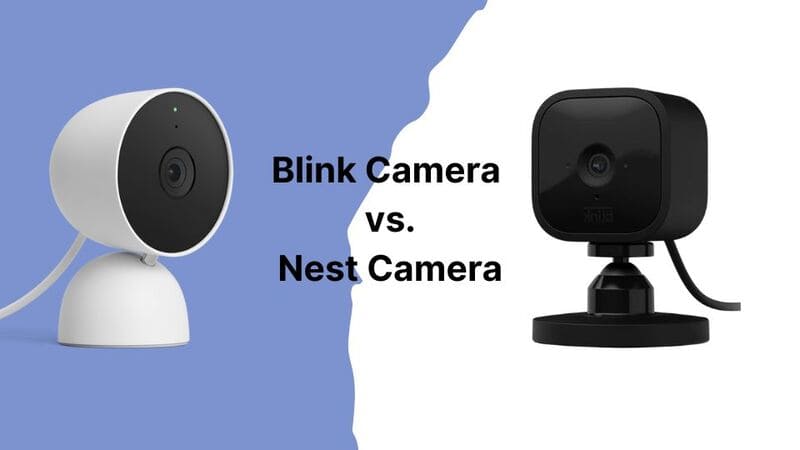Arlo security cameras are made using a globally connected manufacturing system. The CCTV camera brand focuses on high-quality and innovative designs, which are reflected in its production methods. Its facilities are located in various regions, ensuring ethical sourcing and sustainability. This approach helps the brand meet customer expectations for reliable and efficient products.
Knowing where these cameras are made shows Arlo’s focus on quality, cost efficiency, and ethical supply chains—key factors for customers choosing security cameras.
Arlo Security Cameras Overview
Arlo designs security cameras for a global audience, ensuring they meet diverse customer needs. While headquartered in the United States, the company manufactures its cameras in countries with advanced electronics facilities, such as China and Vietnam.
Key Features of Arlo Security Cameras
- Wire-Free Design: Arlo security cameras run on batteries, making installation easy without needing a power outlet.
- Weatherproof Durability: With IP-rated designs, like the Arlo Pro 2’s IP65 rating, these cameras work in temperatures from -4°F to 104°F, perfect for outdoor use.
- Advanced Technology: Features include AI-powered notifications, motion detection, and built-in tools like spotlights and loud sirens (over 100 decibels).
- Storage Options: They support local storage with USB drives and offer cloud recording for convenience.
Who Uses Arlo Security Cameras?
Arlo appeals to a wide range of users, including:
– Homeowners: For monitoring residential properties.
– Parents: With models designed for baby monitoring.
– Surveillance Needs: Indoor and outdoor security cameras handle varied environments.
– DIY Enthusiasts: For those who prefer simple, hassle-free installation.
Where Are Arlo Security Cameras Manufactured?
1. Primary Manufacturing Locations
-
China
Arlo produces many of its products in China through partnerships with companies like Foxconn and Pegatron. These firms are top players in the electronics industry, known for making devices for leading global brands. China’s advanced factories, skilled workforce, and cost-efficient operations make it a key manufacturing hub for Arlo. -
Vietnam
To reduce reliance on one region, Arlo has expanded production to Vietnam. Products such as Arlo Pro base stations and certain camera models often bear a “Made in Vietnam” label. This shift mirrors a broader industry trend toward Vietnam, which offers lower costs and a reliable production environment.
2. Other Potential Locations
- Arlo may also use facilities in other parts of Asia for specific components or assembly work. Spreading production across multiple regions strengthens the supply chain, helping the company navigate challenges like global pandemics or trade disputes.
Benefits of Arlo Security Cameras‘ Manufacturing Choices
Arlo security cameras are now made in Vietnam, marking a shift from their previous manufacturing in China. This change supports Arlo’s Privacy Pledge, ensuring no data is stored in China and addressing cybersecurity concerns. Producing in Vietnam also helps Arlo maintain high-security standards and rigorous testing for product quality and innovation.
1. Benefits of Manufacturing in Vietnam
- Lower Costs: Vietnam’s labor costs are lower than those in Western countries, allowing Arlo to offer competitive prices without reducing quality.
- Reduced Impact of Trade Disputes: Moving production from China helps Arlo avoid tariffs and trade conflicts that could increase costs.
- Improved Supply Chain Security: Working with partners like Foxconn and Pegatron in Vietnam enhances ethical practices and supply chain security.
2. Commitment to Environmental and Ethical Standards
- Environmental Compliance: Arlo follows EU RoHS and China RoHS regulations, ensuring their products are free from harmful substances.
- Conflict-Free Materials: In line with Section 1502 of the Dodd-Frank Act, Arlo avoids using conflict minerals that fund armed groups.
- Sustainable Recycling: The CCTV camera company has global recycling systems to collect and responsibly handle old Arlo products, prioritizing environmental protection and waste management.
These efforts ensure Arlo security cameras’ manufacturing is secure, cost-efficient, socially responsible, and environmentally sustainable.
Comparing Arlo to Competitors
Arlo security cameras are made in Vietnam. This sets them apart from many competitors who still produce devices in China. This choice reflects Arlo’s focus on strong security and privacy standards.
1. Comparison to Competitors
- Google Nest:
- Production moved to Taiwan, Malaysia, and Thailand after the 2018 tariffs.
- Google shares less about its manufacturing process compared to Arlo.
- VIVOTEK and Acti:
- VIVOTEK: Cameras are made in Taiwan.
- Acti: Cameras are produced in Taiwan, Japan, and the United States.
- Speco Technologies:
- Cameras are manufactured in South Korea, unlike CCTV brands that rely on China.
2. Competitive Edge
- Privacy and Security:
Manufacturing in Vietnam reduces risks linked to data breaches and government access, common with Chinese-made devices. Arlo Security Camera’s “Privacy Pledge” underscores its commitment to securing user data and following global privacy rules. - Quality and Compliance:
Arlo complies with strict environmental and regulatory standards, including:- EU RoHS
- California Proposition 65
- China RoHS
These standards ensure responsible sourcing and high product quality.
Conclusion
Arlo security cameras are mainly made in China and Vietnam. These locations are key to Arlo’s partnerships with top manufacturers like Foxconn and Pegatron. This global production strategy helps Arlo create reliable and innovative products at affordable prices. Arlo also prioritizes ethical and sustainable practices in its manufacturing process. This shows Arlo’s commitment to providing trustworthy security solutions for both homeowners and businesses.
By using advanced manufacturing techniques and focusing on quality, Arlo has become a dependable choice for customers worldwide.








